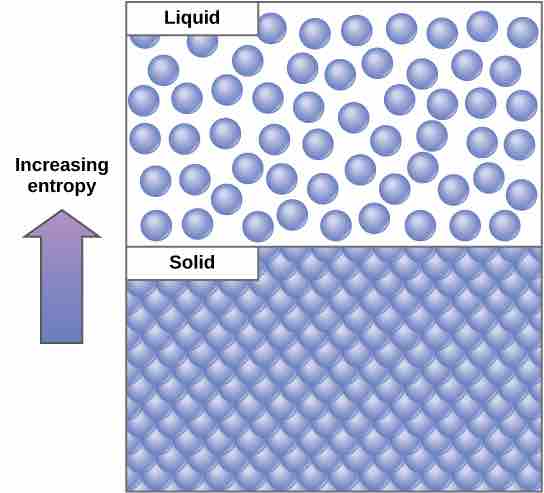The Second Law of Thermodynamics
A living cell's primary tasks of obtaining, transforming, and using energy to do work may seem simple enough, but they are more problematic than they appear. The second law of thermodynamics explains why: No energy transfers or transformations in the universe are completely efficient. In every energy transfer, some amount of energy is lost in a form that is unusable. In most cases, this energy is in the form of heat. Thermodynamically, heat energy is defined as the energy transferred from one system to another that is not doing work. For example, when an airplane flies through the air, some of the energy of the flying plane is lost as heat energy due to friction with the surrounding air. This friction heats the air by temporarily increasing the speed of air molecules. Likewise, some energy is lost in the form of heat during cellular metabolic reactions. This is good for warm-blooded creatures like us because heat energy helps to maintain our body temperature. Strictly speaking, no energy transfer is completely efficient because some energy is lost in an unusable form.
Entropy
An important concept in physical systems is disorder (also known as randomness). The more energy that is lost by a system to its surroundings, the less ordered and more random the system is. Scientists define the measure of randomness or disorder within a system as entropy. High entropy means high disorder and low energy. To better understand entropy, remember that it requires energy to maintain structure. For example, think about an ice cube. It is made of water molecules bound together in an orderly lattice. This arrangement takes energy to maintain. When the ice cube melts and becomes water, its molecules are more disordered, in a random arrangement as opposed to a structure. Overall, there is less energy in the system inside the molecular bonds. Therefore, water can be said to have greater entropy than ice.
This holds true for solids, liquids, and gases in general. Solids have the highest internal energy holding them together and therefore the lowest entropy. Liquids are more disordered and it takes less energy to hold them together. Therefore they are higher in entropy than solids, but lower than gases, which are so disordered that they have the highest entropy and lowest amount of energy spent holding them together.

Entropy
Entropy is a measure of randomness or disorder in a system. Gases have higher entropy than liquids, and liquids have higher entropy than solids.
Entropy changes also occur in chemical reactions. In an exergonic chemical reaction where energy is released, entropy increases because the final products have less energy inside them holding their chemical bonds together. That energy has been lost to the environment, usually in the form of heat.
All physical systems can be thought of in this way. Living things are highly ordered, requiring constant energy input to be maintained in a state of low entropy. As living systems take in energy-storing molecules and transform them through chemical reactions, they lose some amount of usable energy in the process because no reaction is completely efficient. They also produce waste and by-products that are not useful energy sources. This process increases the entropy of the system's surroundings. Since all energy transfers result in the loss of some usable energy, the second law of thermodynamics states that every energy transfer or transformation increases the entropy of the universe. Even though living things are highly ordered and maintain a state of low entropy, the entropy of the universe in total is constantly increasing due to the loss of usable energy with each energy transfer that occurs. Essentially, living things are in a continuous uphill battle against this constant increase in universal entropy.